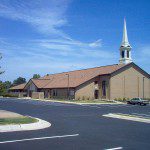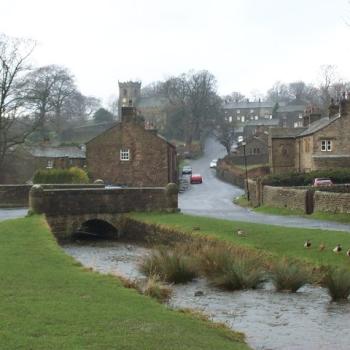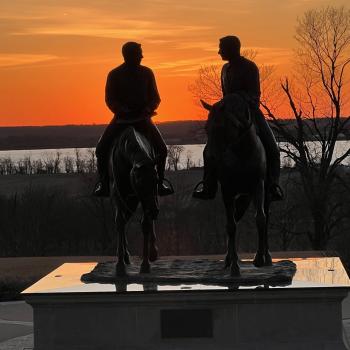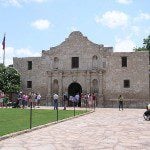
You’ll simply need to deal with it: I’m intending to remind you every day until they’ve actually taken place of the “sneak peek” early screenings of Six Days in August that will occur this coming Monday evening in Cinemark theaters located in Salt Lake City, American Fork, Draper, Farmington, Midvale/Sandy, Ogden, Orem, Provo, and West Jordan: “Six Days in August – Early Access”
I’ll also remind you of the limited-time opportunity that the Interpreter Foundation and the makers of the 2021 Interpreter film Witnesses are affording to every interested person out there to watch Witnesses for free. The window for doing so is finite. It will remain open only until Thursday, 10 October, of next week: https://witnessesfilm.com/.
And, while I’m at it, here is a link that is directly relevant to one of the scenes in Six Days in August and to a part of the story that we tell in the film:
- “Episode 62: Craig Foster on the Destruction of the Nauvoo Expositor.” This podcast, which features Brother Foster, draws upon Craig L. Foster, “Turning Type into Pi:
The Destruction of the Nauvoo Expositor in Historical Context,” which appeared in Interpreter: A Journal of Latter-day Saint Faith and Scholarship 58 (2023): 107-126. “Abstract: The destruction of the Nauvoo Expositor has been portrayed as an event that stands out as a unique act where Joseph Smith and the Nauvoo City Council suppressed free speech. However, rather than being an anomaly, the destruction of the Nauvoo Expositor was historically and socially reflective of society in a volatile period in American history during which time several presses were destroyed and even editors attacked and killed.”
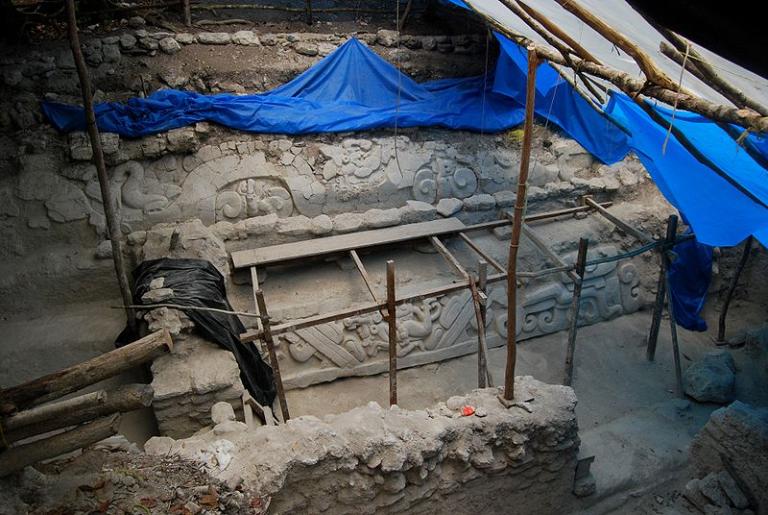
(Wikimedia Commons public domain image)
Last night, I listened to a ninety-minute lecture by the very distinguished Mesoamerican archaeologist Richard D. Hansen — who happens to be a practicing Latter-day Saint — that was entitled “The Cultural and Natural Legacy in the Cradle of Maya Civilization: New Perspectives from the Mirador-Calakmul Karst Basin System.” I thought it exceptionally interesting. A video recording of Brother Hansen’s lecture is now available on the website of the Interpreter Foundation. Kudos to the Interpreter Foundation’s executive vice president, Steve Densley, for lining this lecture up on top of the presentations that had previously been scheduled and given in the series.
Although he didn’t mention the Book of Mormon in his lecture, Dr. Hansen’s remarks did have some rather obvious relevance to the topic — e.g., his mention of written languages, highways (3 Nephi 6:8), building with cement (Helaman 3:7), and large populations with numerous buildings (Helaman 3:8-11).
I don’t know whether Brother Hansen liked the article himself, but here’s an entertaining profile of him that appeared in the now-defunct national neoconservative magazine The Weekly Standard back in 2017: “King of the Jungle: The Mayan Empire of Archaeologist Richard Hansen”
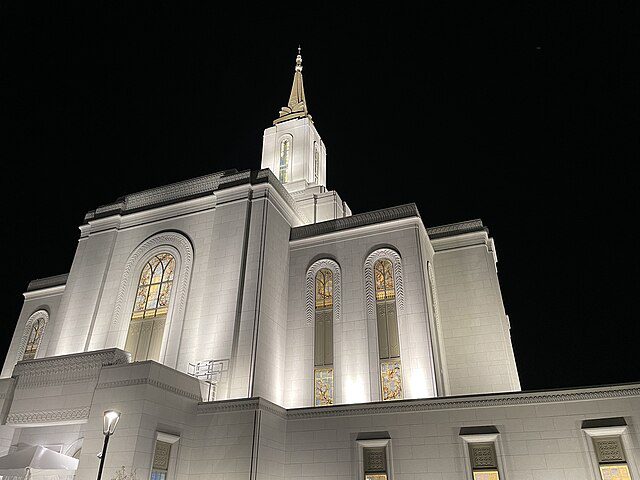
On a very different subject, you might also find this article from the Associated Press and its accompanying video to be of interest: “Mormon faith pushes ahead with global temple building boom despite cool reception in Las Vegas”
It’s important to note, however, that the Associated Press report by Ken Ritter and Hannah Schoenbaum is misleading in at least one really important way: In both its text and its video, AP falsely asserts that, if actually built, the Lone Mountain Nevada Temple will be larger than the Cathedral of Notre Dame in Paris. No wonder people in the neighborhood are outraged!
Evidently, though, and simplistically, Ritter and Schoenbaum seem to have based their claim only on square footage: The Lone Mountain Nevada Temple is predicted, according to plans, to enclose 70,194 square feet of floor space, whereas Notre Dame has a floor area of only about 64,000 square feet.
When we compare other figures, though, the proposed second temple for Las Vegas turns out to be substantially smaller than is Paris’s cathedral. For instance, the Lone Mountain Nevada Temple will be 196 feet tall at its highest point, whereas the two towers of Notre Dame’s façade are both 226 feet tall and its central spire reaches 315 feet.
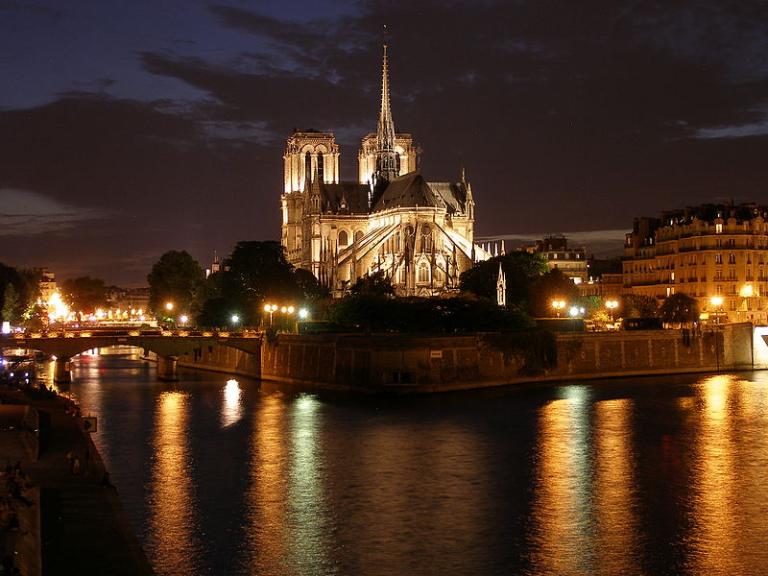
Much more significantly, though, Notre Dame Cathedral has essentially only one floor, the ground floor, whereas I would guess from the architect’s rendering (see below) that the Lone Mountain Nevada Temple will include minimally four whole or partial floors.
I don’t have figures for the length and breadth of the Lone Mountain Nevada Temple, but it’s easy enough to make a rough and ready estimate of them:
Let’s assume, very conservatively, that the new temple will have 3.5 floors — a ground-level floor for the recommend desk and offices and dressing rooms and a chapel and the like, second and third floors for sealings and other ordinances, and a half-floor underground for the baptistry. (This is a reasonable estimate for the number of floors, based on the architect’s rendering of the exterior.) We divide the total square footage at Lone Mountain by seven and subtract one-seventh from the total because the baptistry will likely be largely if not wholly subterranean and, accordingly, will not affect the outer perimeter dimensions of the building.
That yields about 62,000 square feet, in total, for the three main floors, for an average of not quite 21,000 square feet per floor. (In every case, I’m rounding the numbers up so as to be as generous as possible to objections.). However, as the architect’s rendering illustrates, the ground floor will be the largest temple floor. Let’s be generous again and make it fully twice as large as the two floors above it, which would make it approximately 31,000 square feet — a figure that is very probably grossly inflated.
If the temple, at its base, is perfectly square — which it may be — the length of each of its first-floor walls would be the square root of 31.000 feet, which comes out, even under the extremely generous figures that I’ve used here, to just slightly more than 176 feet. Thus, in actual fact, Notre Dame is not only considerably taller than the temple that is proposed for northwest Las Vegas — the main structure of the cathedral, minus towers and spire, is 211 feet high, which is taller than Lone Mountain’s tower and far taller than the single-story first-floor area of the temple — but its footprint is substantially larger than that of the Lone Mountain Nevada Temple:
Notre Dame is 420 feet long and 157 feet wide, for a total perimeter of approximately 1154 feet, compared to Lone Mountain’s 704 feet. Wildly exaggerated as it almost certainly is, my estimated square footage for the first floor at Lone Mountain — 31,ooo — is less than half of Notre Dame’s 64,000. And the volume enclosed within the main space of Notre Dame (roughly 13,504,000 cubic feet, a figure that I derive from multiplying the height of that main space by the square footage of its floor) is approximately eighteen times the volume of space that I estimate will be enclosed within the Lone Mountain Nevada Temple (very roundly, 750,000 cubic feet).
Thus, for the Associated Press to announce that the Lone Mountain Nevada Temple will be larger than the Cathedral of Notre Dame in Paris is grossly misleading — as anybody who has ever seen Notre Dame would immediately realize by simply glancing at the architect’s rendering of the proposed temple. In fact, the assertion seems downright prejudicial, if not inflammatory and sensationalizing. I don’t want to accuse Ritter and Schoenbaum of any deliberate wrongdoing, so I’ll simply say that their claim is plainly false and quite irresponsible. And, since the sheer size of the building is one of the main points raised against it by its opponents, to have messed up on this particular issue is especially unfortunate.
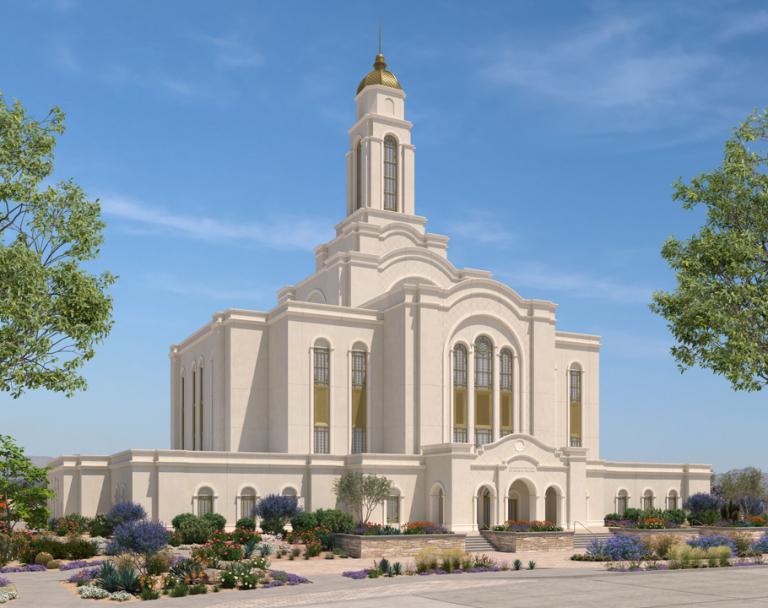
While we’re thinking about temples and temple construction here’s something, from the always-worth-reading Tad Walch at the Deseret News: “‘Epic’ Salt Lake Temple renovation ‘is the biggest preservation project’ in Latter-day Saint history: Project managers, historian say the temple is not a museum that excludes people but a flagship to the world.” Incidentally, Brent Roberts (who is cited in the article) served as the president of our stake a few years ago.
And this is kinda fun: “Latter-day Saint Returned Missionary Playing Football for Navy Featured in Video Interview: Sophomore Marcus Bleazard of Kennesaw, Georgia, served his mission in Guatemala City, Guatemala”


